As we all know, the weather doesn’t always cooperate with our plein air painting plans. We experienced this yesterday on the third paint-out of the Plein Air Convention & Expo (PACE). As we boarded the busses to visit the Garden of the Gods, the thunder was so loud that it was setting off car alarms.
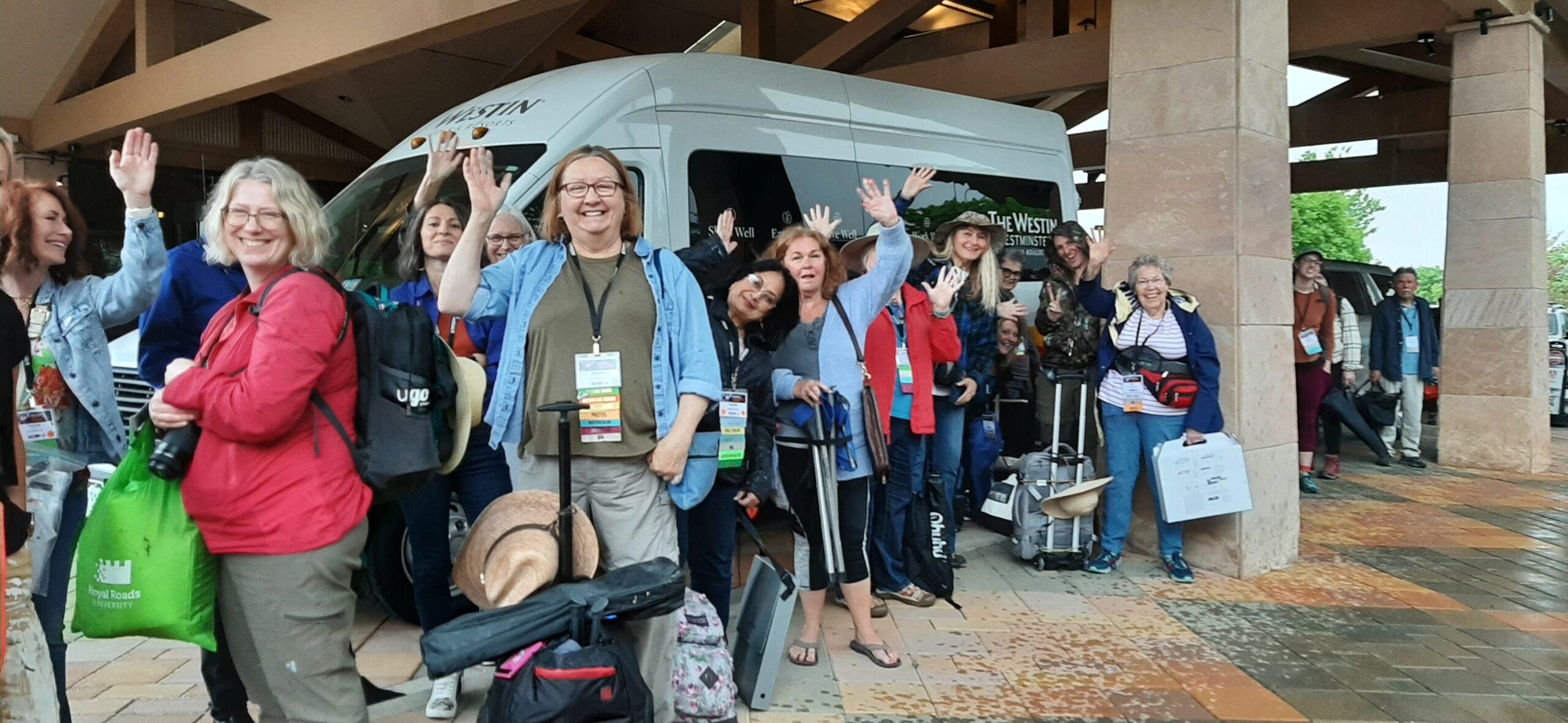
Once on board, however, we enjoyed a relaxing ride to the park, where the dark contrast of the sky illuminated the red rocks and the clouds would give us stunning glimpses of Pike’s Peak.
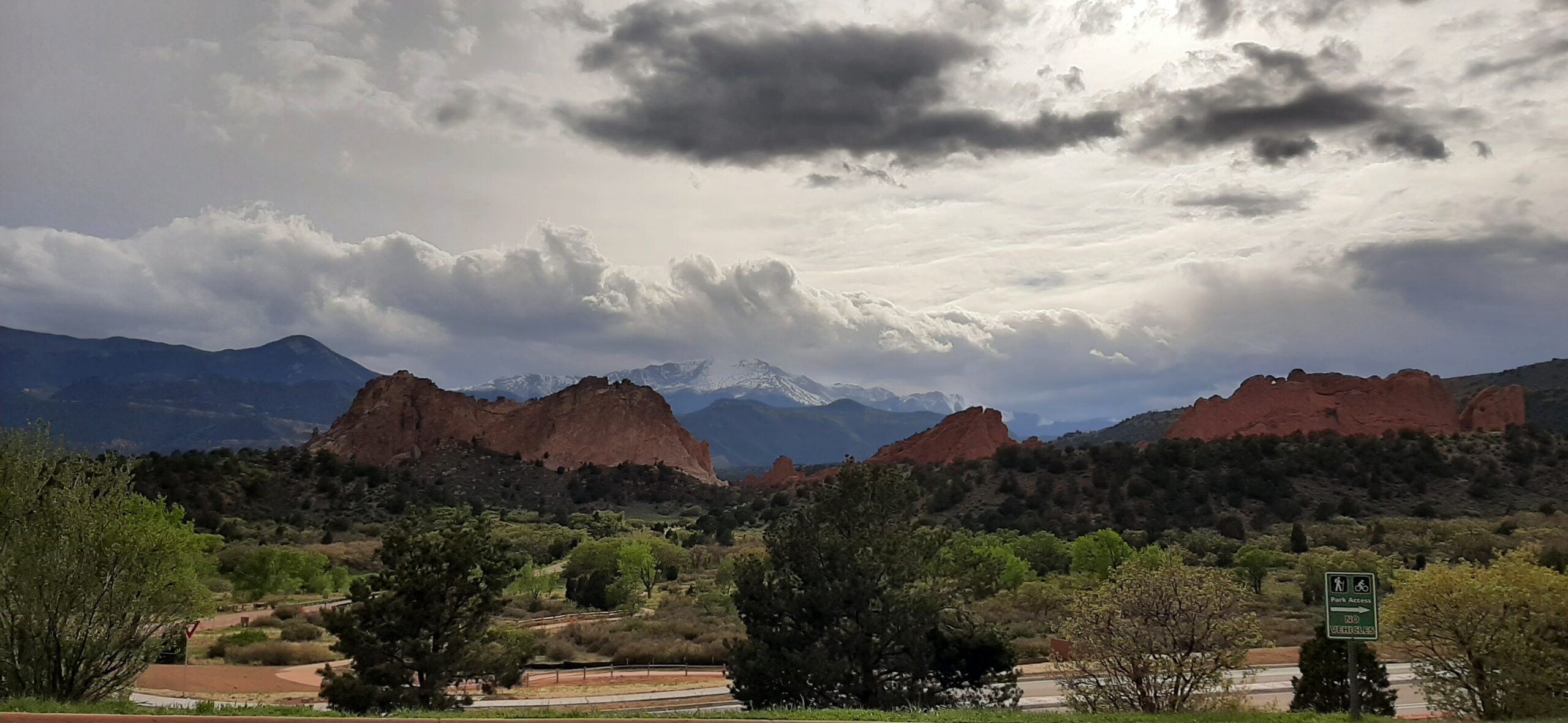
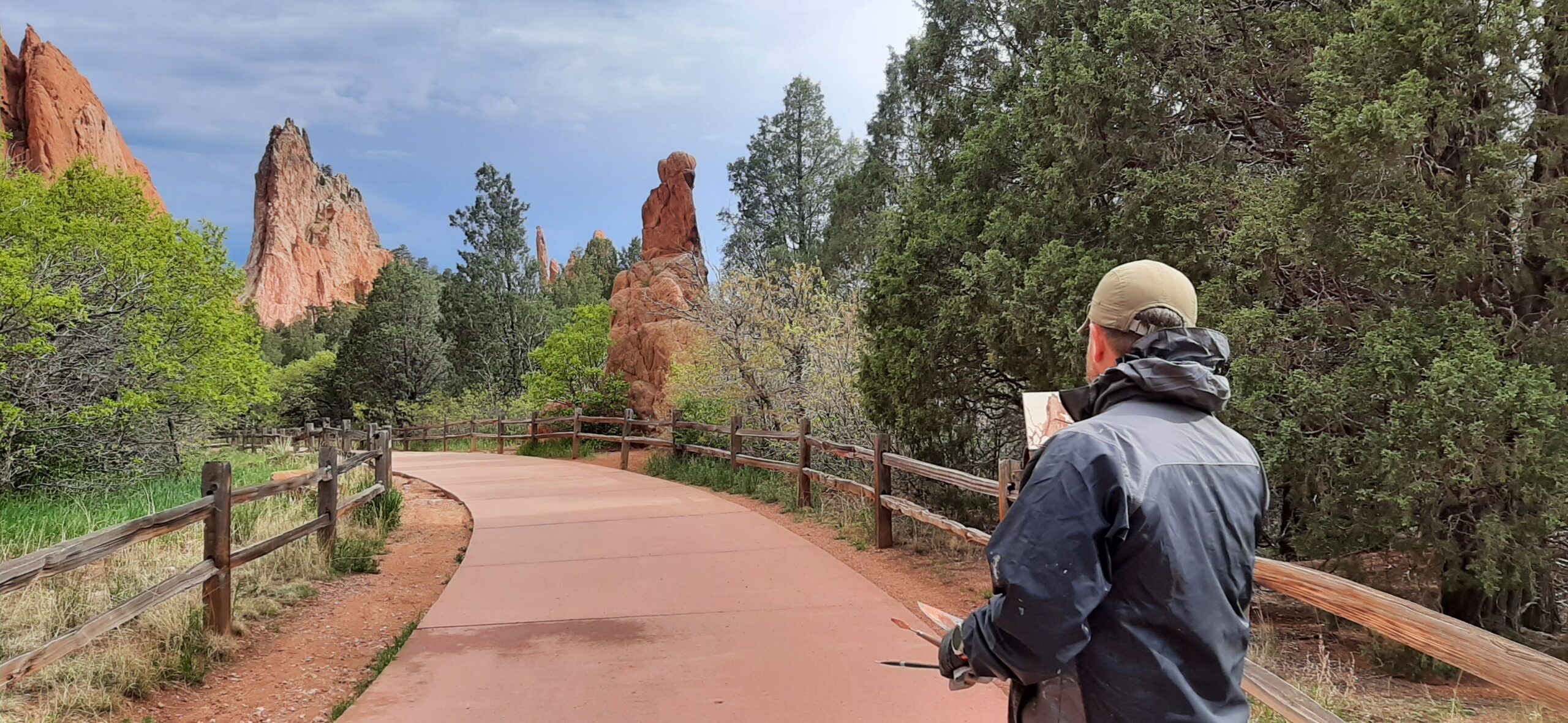
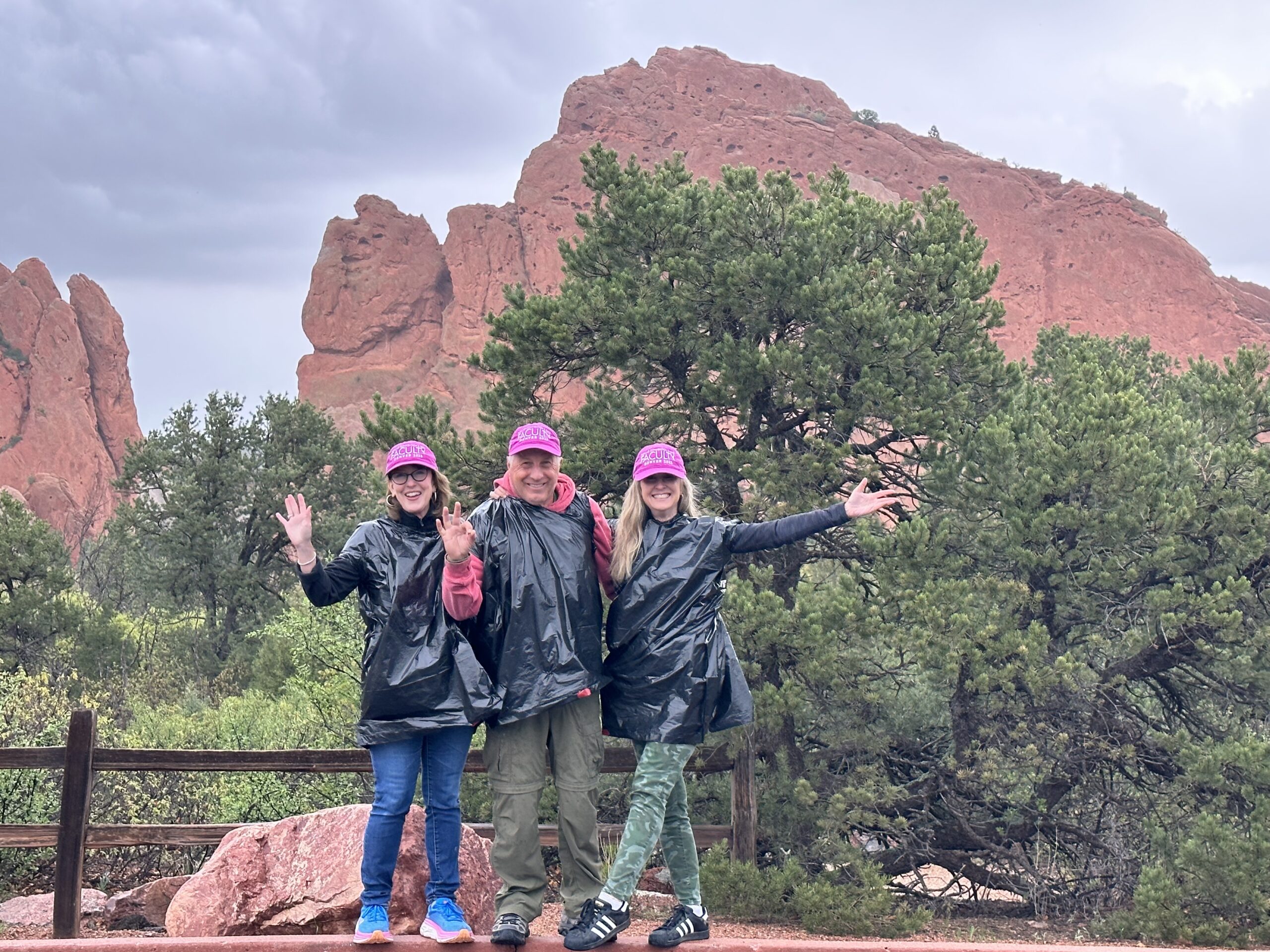
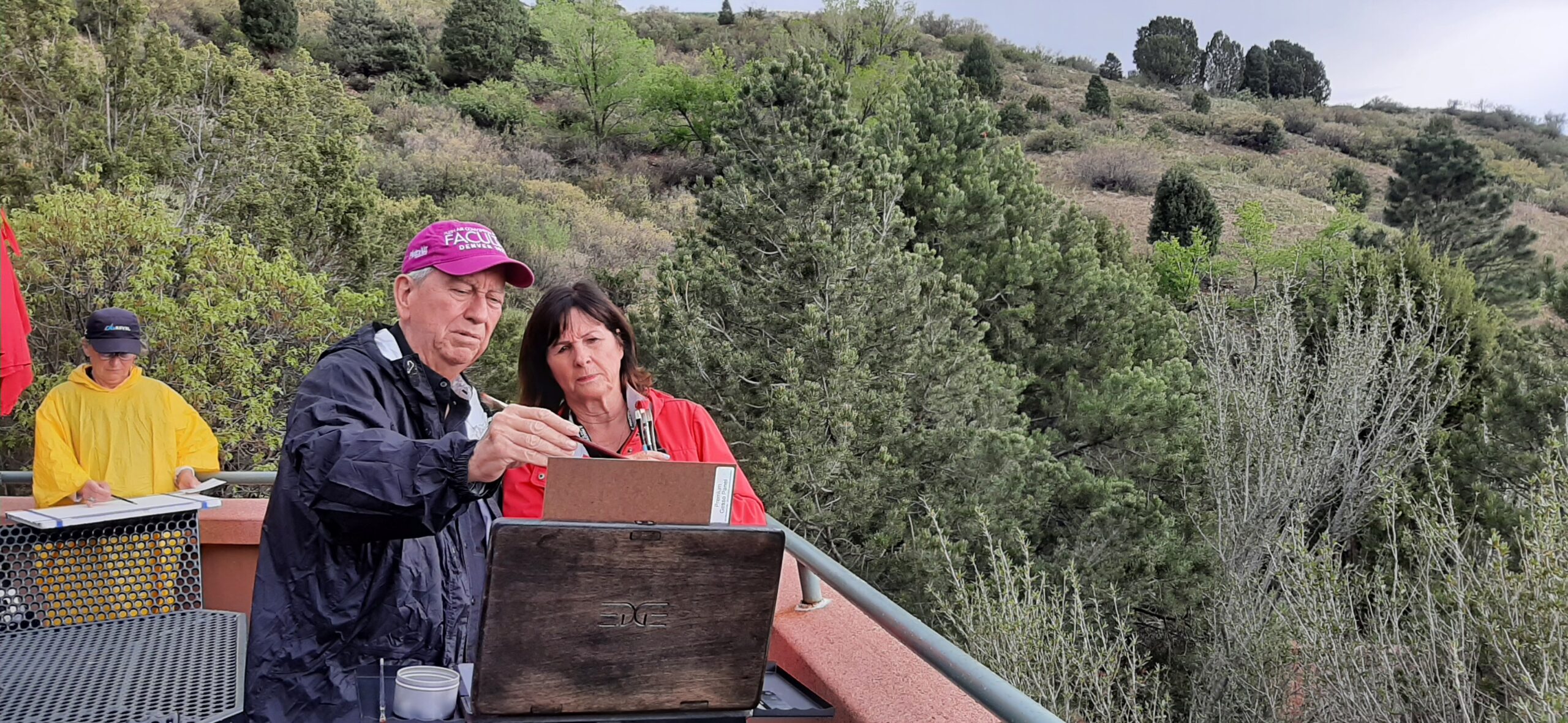
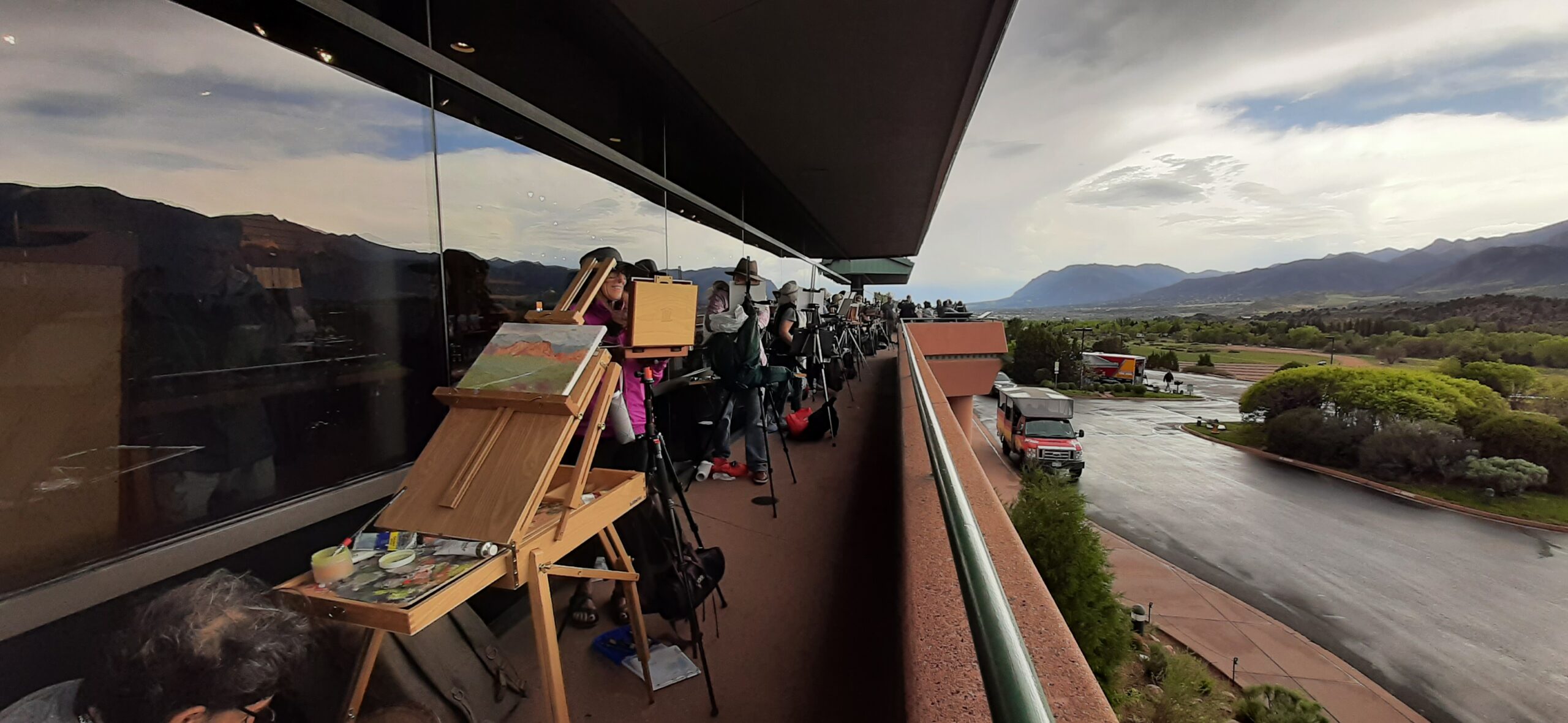
Today, our group is visiting Rocky Mountain National Park, where Albert Bierstadt himself painted historic landscapes.
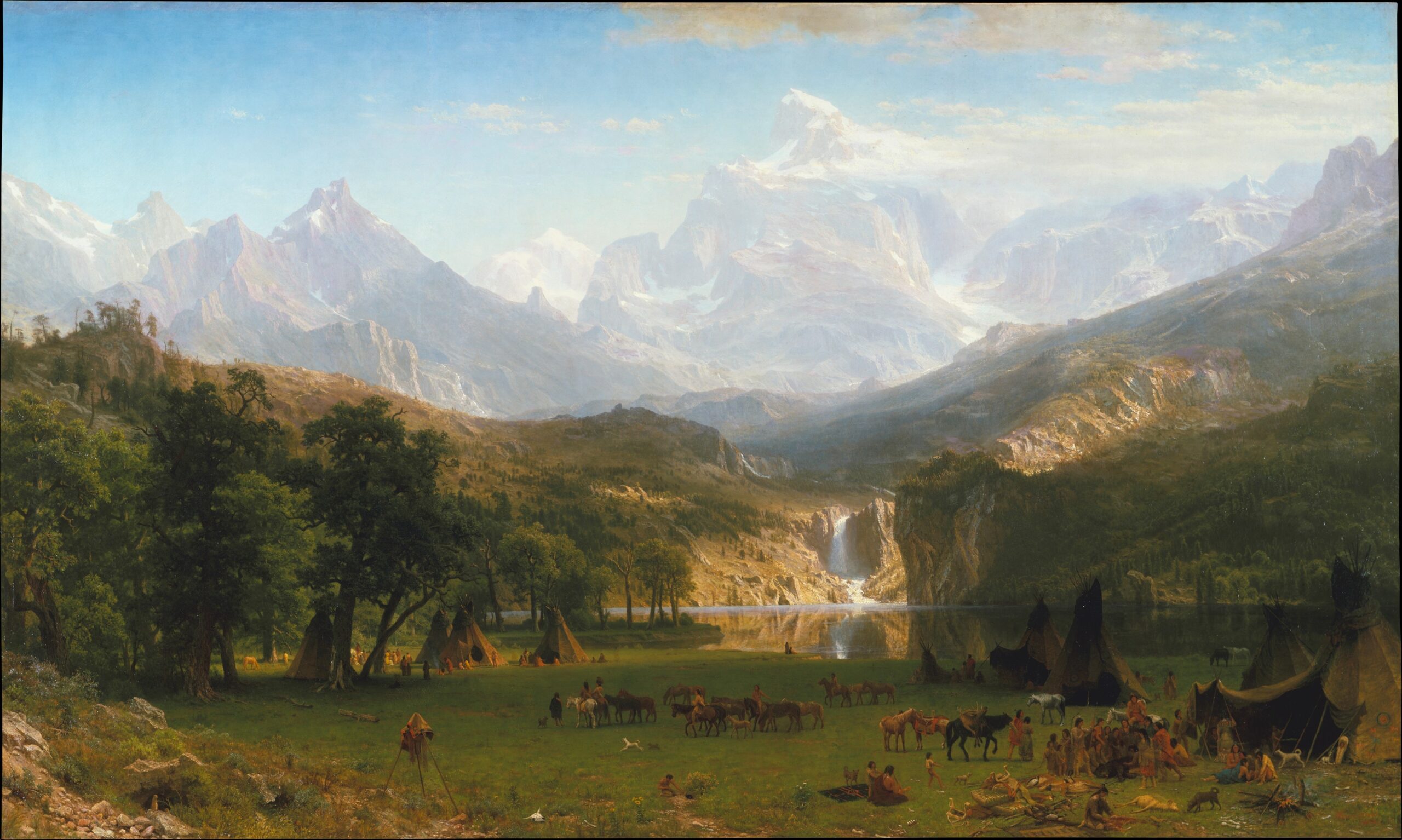
And have you heard where we’re going next year? We’ll be in the beautiful Great Smoky Mountains! Visit PleinAirConvention.com now to start making your plans!
We want to give a special thank-you to our faculty, in-person and online attendees, volunteers, and sponsors. I’d like to personally thank fellow journalist and art enthusiast Laura Vailati of Miami Niche for her help in covering all of the amazing things happening all day, every day, across five stages, and beyond. And, a special thank you to Davis Perkins from myself and all of us at PACE; Davis is a paramedic who travels to help those suffering from catastrophes, and he kindly offered his expertise while at PACE.
Here’s a recap of the final day of indoor demonstrations:
Don Demers, who’s considered to be one of the finest marine painters in America, gave us a main stage masterclass on how to portray the anatomy and movement of the sea as it interacts with the shoreline.
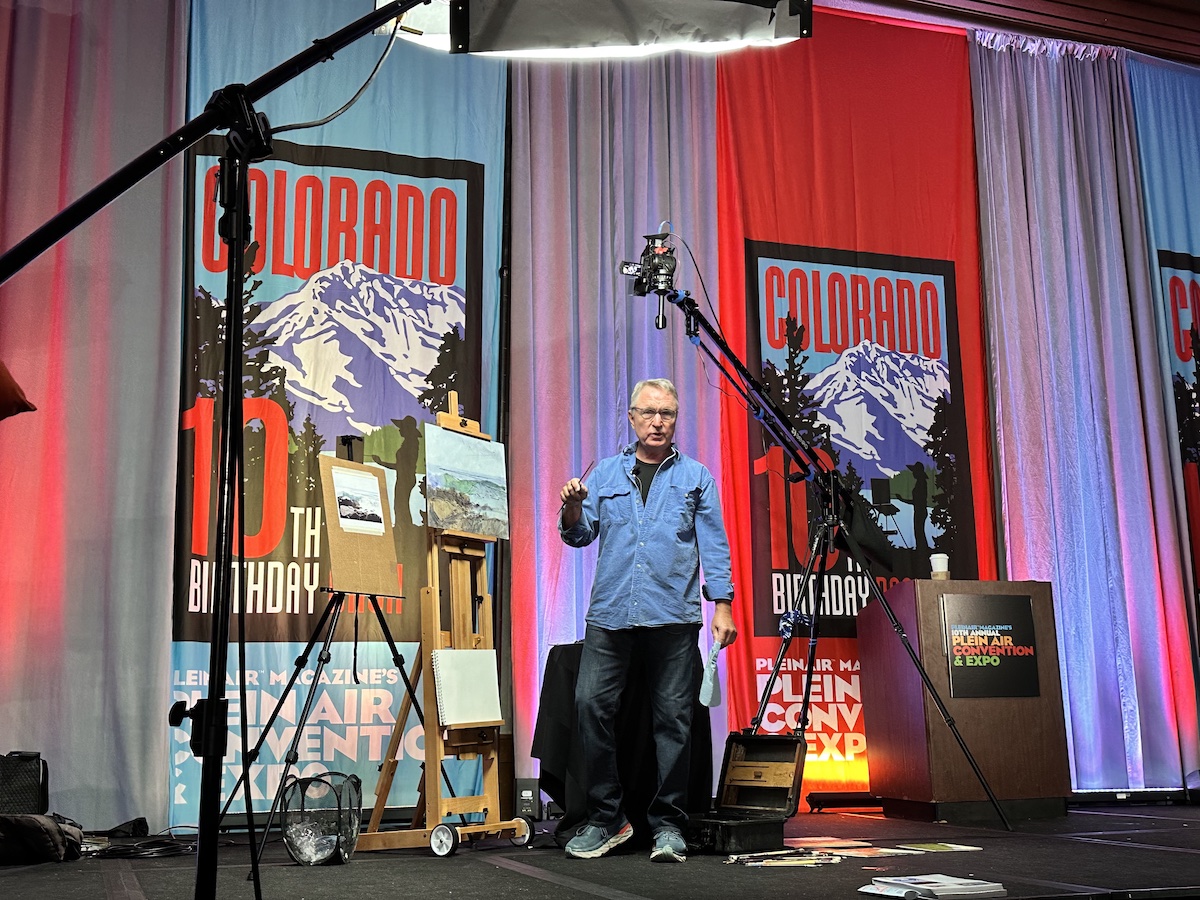
Also, PleinAir Salon winner Lori Putnam showed us how she creates a “color symphony” using sensitive chroma and the right value key in her “Vibrant Expressions” demonstration on the main stage.
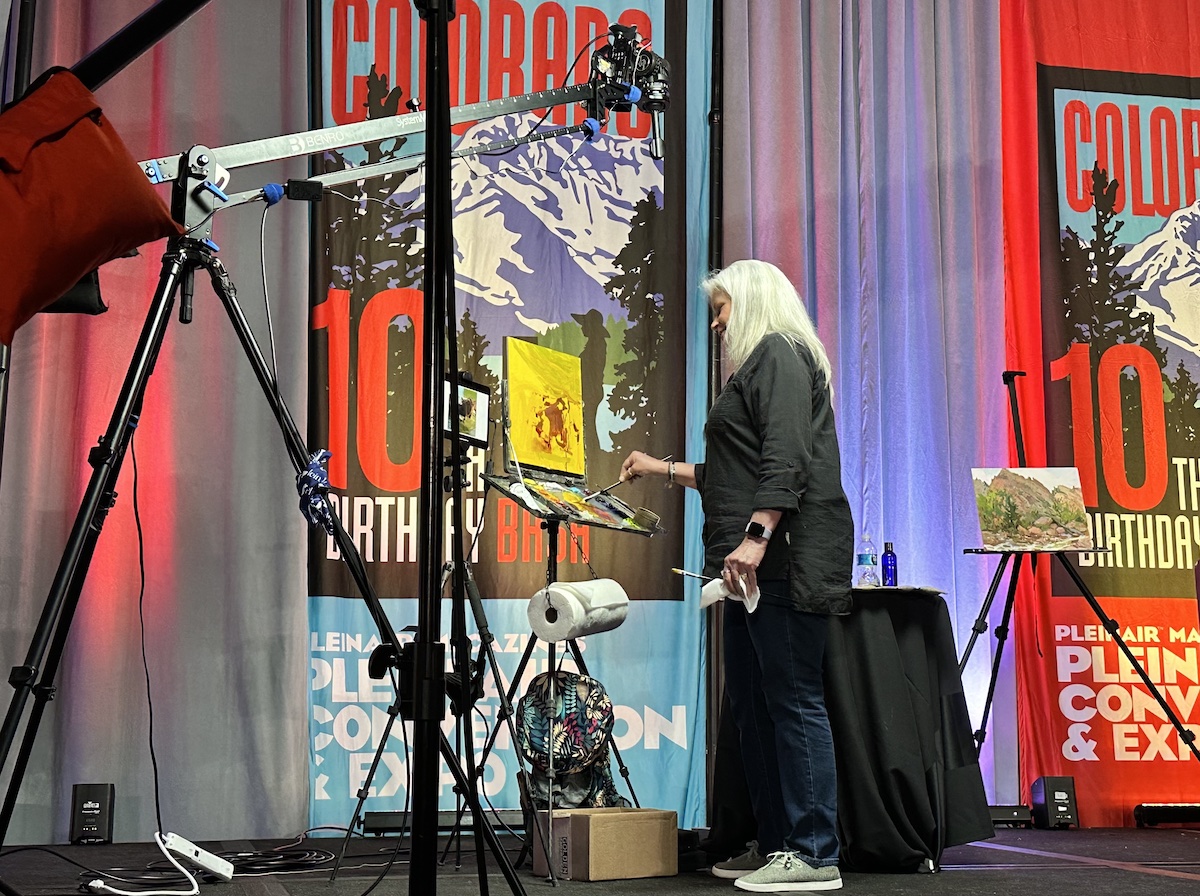
More Favorite Moments
In Nancy Tankersley’s session, we looked at cityscapes from different heights to understand sightlines and where to place your vanishing points to simplify the process to get perspective right.
There is no subject from which it is impossible to develop a magical painting. Michael Holter demonstrated how to create an exciting painting from a not-so-great image, using light and shadow and atmosphere to create a magical landscape.
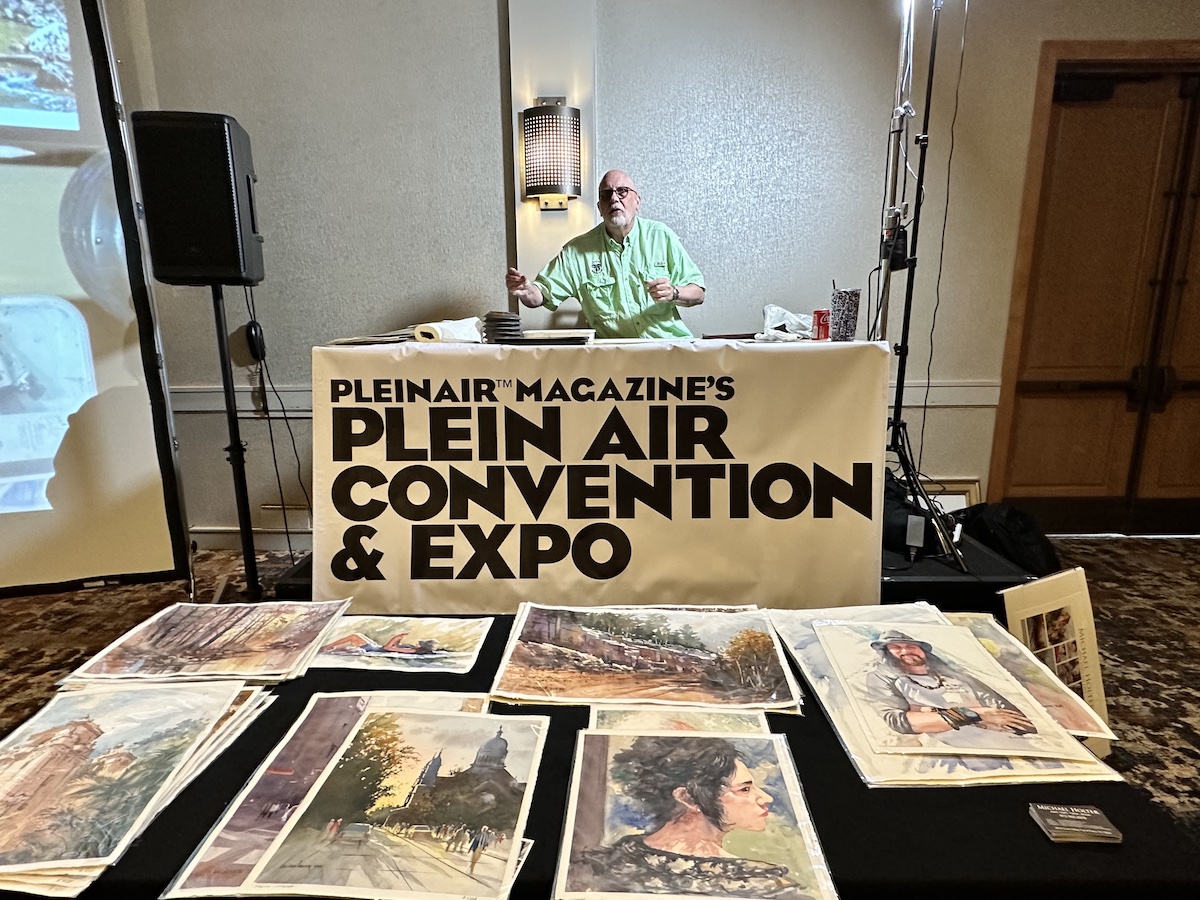
How do you integrate a figure in a landscape? What is the painting about, the figure or the landscape? In Raj Chaudhuri’s demo, we learned to ask the right questions — namely design/composition, painting idea/approach, and the narrative standpoint — to help drive our painting choices, and we saw the role of thumbnails, sketches, color studies, and final paintings.
Why does this angle go that way, and that angle go this way? Shelby Keefe gave a cityscape demonstration featuring a lesson on perspective principles in “It’s a Matter of Perspective.”
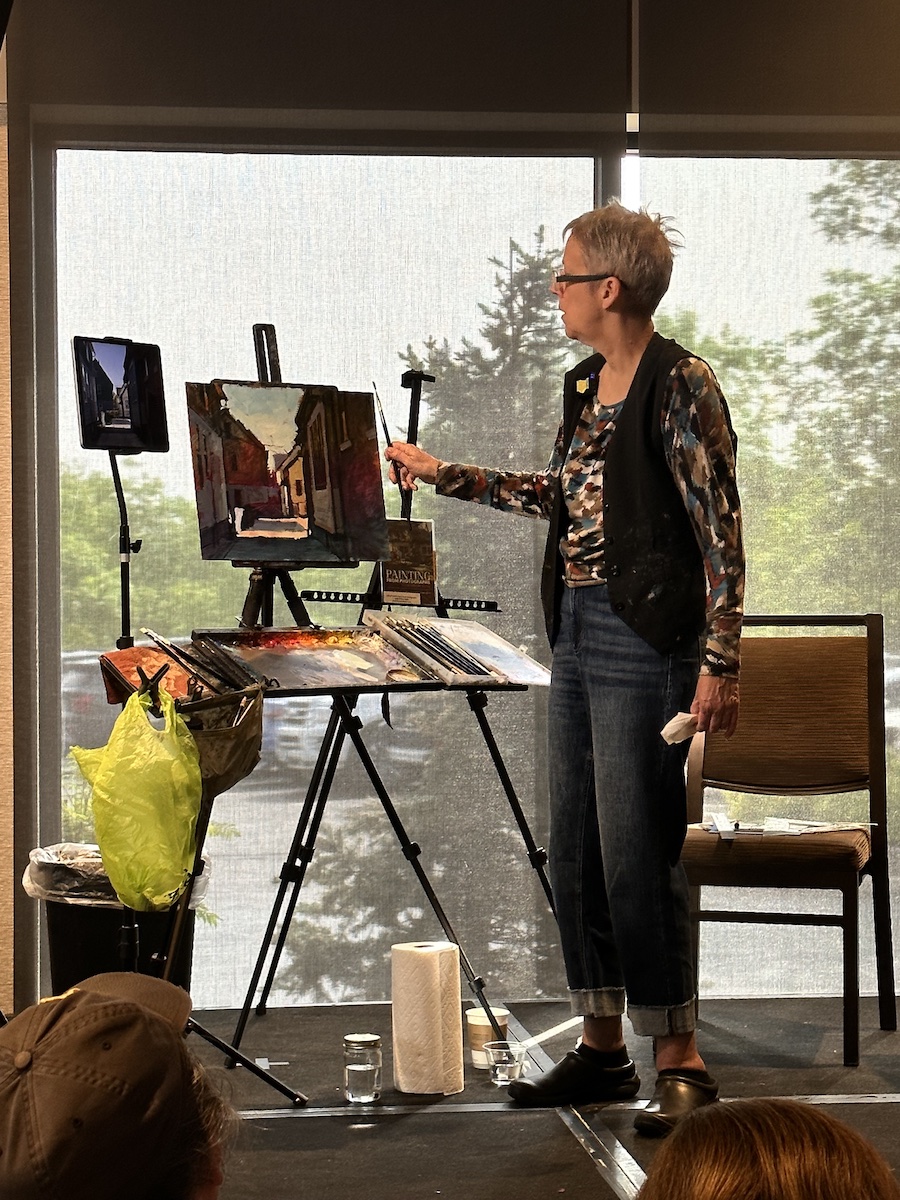
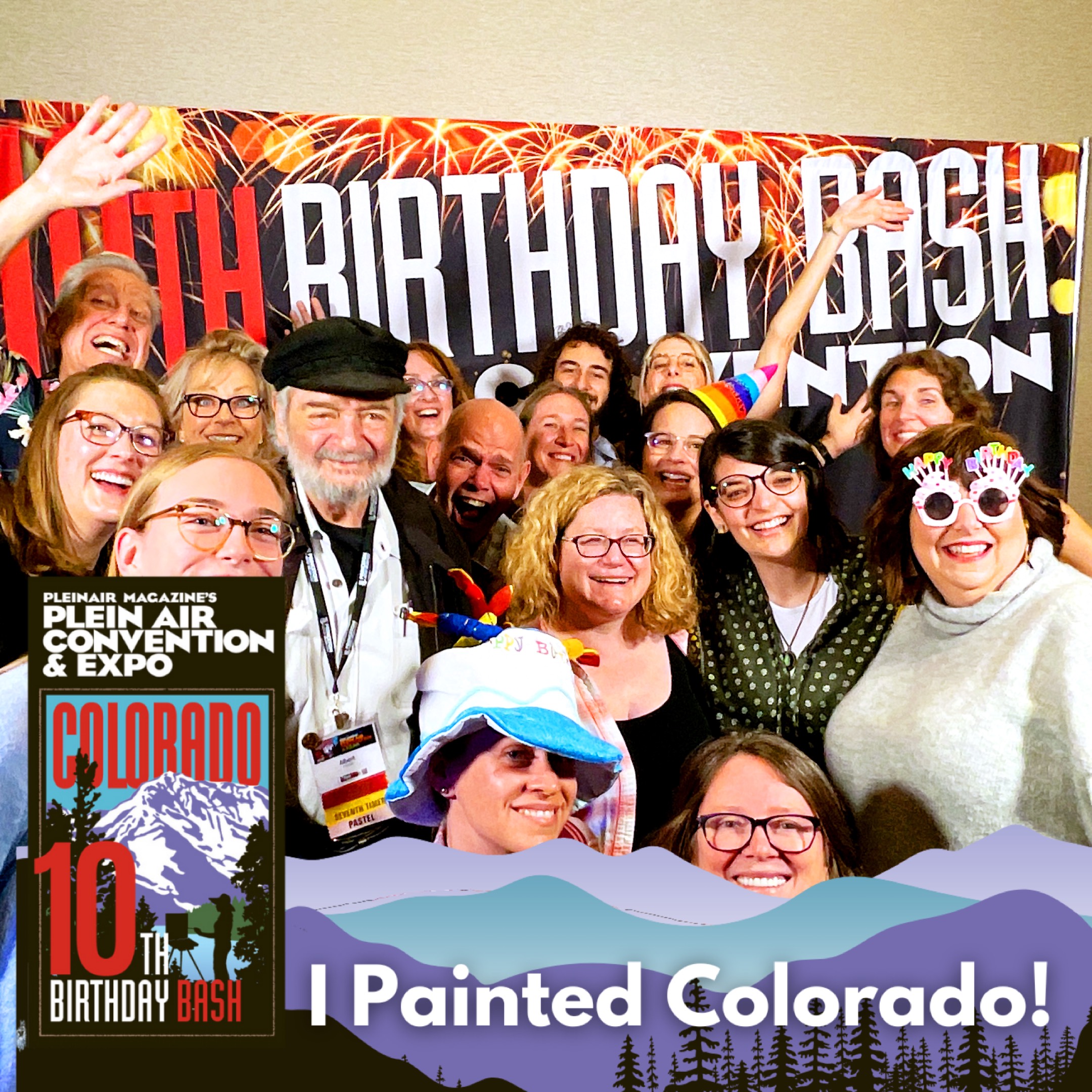
As we come to the end of PACE ‘23, some of us are saying goodbye until next time, and some are staying for the final paint-out at Rocky Mountain National Park on Thursday of this week.
We can’t wait to see you in the Great Smoky Mountains for the 11th Annual Plein Air Convention!

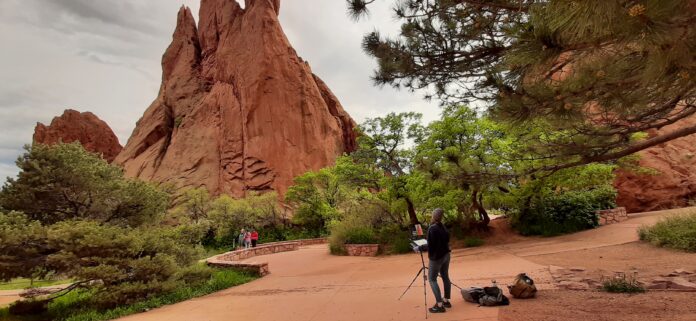

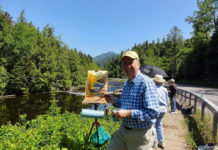
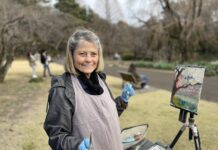
Sorry ! I unsubscribed accidentally.